Reviews
Rupert Julian and Erich von Stroheiem
USA, 1923
Credits
Review by Evan Kindley
Posted on 28 August 2009
Source Image Entertainment DVD
Categories Oh, the Depravity! The Cinema of Erich von Stroheim
Whatever other liberties he may have taken with his identity — such as claiming noble ancestry when he in fact grew up middle-class — we do know for sure that Erich von Stroheim hailed from Vienna. “Vienna, with a code of morals all its own…” as it is introduced by a title card early in Merry-Go-Round, was already a lost paradise for Stroheim even in this pre-Nazi era, and in his fourth film he wished to celebrate it. Stroheim’s biographer Richard Koszarski writes that postwar Vienna for Stroheim was “the ultimate horror… To him this is a dead city, with gaiety and life drained out of it.” In Koszarski’s opinion, “[n]o matter what his true origins, von Stroheim completely identified himself with the ancien regime, and its fall was traumatic… Von Stroheim could not go home again, but he could bring this dead world to life by recreating it on screen.” Such was apparently Stroheim’s grand intention for Merry-Go-Round: a before-and-after portrait of European culture that would indicate what was lost at the time of the First World War, something along the lines of Proust’s In Search of Lost Time or (closer to home) Robert Musil’s The Man Without Qualities perhaps.
On the other hand, the surviving footage shot by von Stroheim, almost all of which occurs in the film’s first fifteen minutes, suggests a much lighter, less ambitious film. Perhaps because he had yet to get more deeply into the material (von Stroheim preferred to shoot in sequence, and tended to find the tone of his films as he worked). The opening scenes of Merry-Go-Round put one in mind of Ernst Lubitsch or Max Ophuls (whose La Ronde was based on an Arthur Schnitzler novel that Stroheim also drew on for inspiration). The scene is laid in Vienna (“old — gray — historical — “), where our hero Count Franz Maximillian von Hohenegg (a part originally intended for von Stroheim himself but taken here by the nondescript Norman Kerry) is engaged to the Countess Gisella. We get some light Nabokovian comedy centering around Count von Hohenegg and his mistreatment of his hapless attendant, juxtaposed with the Countess’ similarly rough treatment of her ladies in waiting. Von Stroheim’s signature here is in the little details — the way light pours into the Count’s lavish bedroom and on to his sleeping face, or the jolt with which his carriage (a real one, formerly belonging to Emperor Franz Josef and imported from Vienna, according to Koszarski) jostles to a start, or the helpful translation of a love note provided, via dissolve — and the relaxed but lively pace.
More tantalizing is a later, briefer sequence, depicting a rowdy banquet held by the Count and his pals. As a string quartet saws away in the background, only partly visible behind a curtain, we watch a group of drunken officers guzzle champagne and drink from an enormous loving cup, which turns out also to contain a scantily clad girl. This scene gestures at a more Bacchanalian direction that von Stroheim might have taken the picture, if he’d been retained (and indulged) for the duration of the shoot.
These two, somewhat incommensurable chunks of the film suggest rather different finished films; which one Merry-Go-Round would have on the whole resembled is an interesting but moot question. After a troubled production (power outages, fighting between von Stroheim and production manager James Winnard Hum, and star Norman Kerry’s alcoholism, in addition to the usual budget overruns) von Stroheim was fired by Irving Thalberg and replaced with Rupert Julian. Julian (a New Zealand-born actor who, like von Stroheim, was frequently cast as a villainous German) both rewrote von Stroheim’s script and reshot several scenes that had already been completed. While the extent of his fidelity to the original conception is much disputed, it’s clear that he had no feel for the little touches that attracted von Stroheim to the Viennese environment in the first place.
In Julian’s hands, Merry-Go-Round descends into sub-Chaplin maudlinness, centering around the fate of Agnes, a poor little organ-grinder girl that the Count discovers working at The Prater (“the Coney Island of Vienna”). Posing as a necktie salesman he woos her away from her other potential love interest Bartholomew (a hunchback circus barker and keeper of an orangutan named Boniface) and her tormentor Schani Huber. Where von Stroheim, even in the brief and relatively uneventful scenes that open the movie, manages to pace things perfectly, Julian’s version merely plods along. Visually, there’s not much going on at all: while Koszarski notes that von Stroheim’s original script included “many references to camera movement” (and we see a little bit of it in the banquet scene), Julian keeps the camera stationary at all times. Thus scene after scene plays out with a deadening monotony, even the most potentially incendiary ones, like the one where Huber attempts to rape Agnes, or Boniface the orangutan sneaks into Huber’s bedroom in the middle of the night and wrings his neck. This last scene is a case in point of Julian’s lack of nerve and imagination: he cuts away before the coup de grace is struck (von Stroheim would certainly have found a way to film the murder, probably an astonishing way).
The final cut of Merry-Go-Round is thus largely a tepid affair, of little interest to anyone but Stroheim scholars. Those interested in viewing the scenes definitely shot by Stroheim can find them as extras on the Queen Kelly DVD. And those who want to imagine an all-von Stroheim version may want read Koszarski’s account of the 976-scene version he left behind (like a trick shot of famous German composers playing together in one orchestra, or an exploration of tensions between Communist workers and a dying aristocracy, or subplots hinting at sadomasochism and homosexuality). Sadly, whatever resemblance Merry-Go-Round may bear to von Stroheim’s scenario, or to real-life Vienna before the First World War, it bears no resemblance to a von Stroheim film, in the sense that anyone cares about.
More Oh, the Depravity! The Cinema of Erich von Stroheim
-
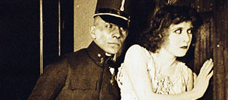
Blind Husbands
1919 -
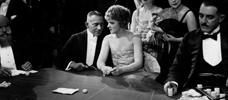
Foolish Wives
1922 -
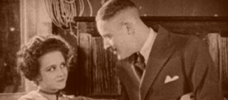
Merry-Go-Round
1923 -
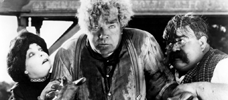
Greed
1924 -
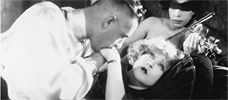
The Merry Widow
1925 -
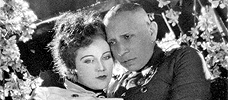
The Wedding March
1928 -
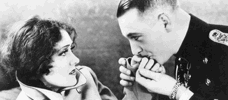
Queen Kelly
1929 -
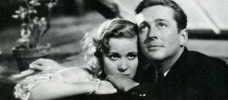
Hello, Sister!
1933
We don’t do comments anymore, but you may contact us here or find us on Twitter or Facebook.



